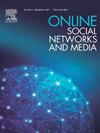社交网络中的归纳多视角用户分类
IF 2.9
Q1 Social Sciences
引用次数: 0
摘要
在线社交网络越来越多地将人们暴露在传播歧视、仇恨和暴力内容的用户面前。年轻用户尤其容易接触到这类内容,可能产生有害的心理和社会影响。鉴于当今社交网络的巨大规模,无论是发布的内容还是用户数量,都迫切需要有效的系统来帮助执法机构(LEAs)识别和处理传播恶意内容的用户。在这项工作中,我们介绍了一种基于机器学习的方法,用于检测恶意社交网络用户。我们的方法采用了一种混合分类策略,该策略集成了三个视角:用户发布内容的语义、他们的社会关系和他们的空间信息。这种上下文透视图可能会提高纯文本分析之外的分类性能。重要的是,vast采用归纳学习方法,使其能够对以前未见过的用户或整个新网络进行分类,而无需昂贵且耗时的模型再训练过程。在真实的Twitter/X数据集上进行的实验表明,与五个最先进的竞争对手相比,vast具有优势,证实了其混合方法在社交网络监控系统中有效部署的好处。本文章由计算机程序翻译,如有差异,请以英文原文为准。
IMMENSE: Inductive Multi-perspective User Classification in Social Networks
Online social networks increasingly expose people to users who propagate discriminatory, hateful, and violent content. Young users, in particular, are vulnerable to exposure to such content, which can have harmful psychological and social repercussions. Given the massive scale of today’s social networks, in terms of both published content and number of users, there is an urgent need for effective systems to aid Law Enforcement Agencies (LEAs) in identifying and addressing users that disseminate malicious content. In this work we introduce IMMENSE, a machine learning-based method for detecting malicious social network users. Our approach adopts a hybrid classification strategy that integrates three perspectives: the semantics of the users’ published content, their social relationships and their spatial information. Such contextual perspectives potentially enhance classification performance beyond text-only analysis. Importantly, IMMENSE employs an inductive learning approach, enabling it to classify previously unseen users or entire new networks without the need for costly and time-consuming model retraining procedures. Experiments carried out on a real-world Twitter/X dataset showed the superiority of IMMENSE against five state of the art competitors, confirming the benefits of its hybrid approach for effective deployment in social network monitoring systems.
求助全文
通过发布文献求助,成功后即可免费获取论文全文。
去求助
来源期刊

Online Social Networks and Media
Social Sciences-Communication
CiteScore
10.60
自引率
0.00%
发文量
32
审稿时长
44 days
 求助内容:
求助内容: 应助结果提醒方式:
应助结果提醒方式:


